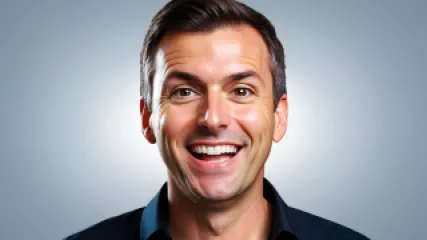Mastering Body Language Basics: An Expert Interview
Mastering Body Language Basics: An Expert Interview with Michael Oliver
In the dynamic realm of interpersonal communication, body language plays a pivotal role in conveying our thoughts, emotions, and intentions. From the subtle nuances of eye contact to the expressive gestures we make, our bodies serve as a silent yet powerful language that can make or break our interactions. To shed light on the fundamentals of this captivating field, we sat down with Michael Oliver, a renowned expert in the art of body language and nonverbal communication.
Unlocking the Secrets of Body Language
Michael Oliver has dedicated his career to studying the intricacies of body language and how it can be harnessed to enhance our personal and professional lives. With a deep understanding of the science behind nonverbal cues, he has helped countless individuals unlock the power of their own body language and leverage it to achieve greater success in their endeavors.
"Body language is a universal language that transcends cultures and borders," Michael explains. "It's a fundamental aspect of human communication that we often overlook, yet it can have a profound impact on the way we perceive and interact with the world around us."
The Foundations of Body Language
At the core of Michael's expertise lies a deep understanding of the basic building blocks of body language. He emphasizes that mastering these fundamentals is essential for anyone seeking to improve their nonverbal communication skills.
Posture and Stance
One of the most significant aspects of body language, according to Michael, is our posture and stance. "The way we hold our body, the position of our shoulders, and the angle of our hips all send powerful signals to those around us," he explains. "An upright, open posture conveys confidence and approachability, while a hunched, closed-off stance can be perceived as disinterested or even defensive."
Michael encourages individuals to be mindful of their posture, and to make a conscious effort to maintain an open and engaged stance, even in situations where they may feel uncomfortable or self-conscious.
Facial Expressions
Another crucial element of body language, according to Michael, is the role of facial expressions. "Our faces are the windows to our emotions, and they can either reinforce or contradict the words we're saying," he notes. "A genuine smile, for instance, can create an atmosphere of warmth and trust, while a furrowed brow or a tight-lipped expression may convey discomfort or skepticism."
Michael emphasizes the importance of being aware of our facial expressions and ensuring that they align with the message we're trying to convey. "By mastering the art of deliberate, authentic facial expressions, we can greatly enhance our ability to connect with others and build meaningful relationships."
Eye Contact
Perhaps one of the most powerful yet often overlooked aspects of body language, eye contact plays a vital role in our interactions, according to Michael. "The way we make and maintain eye contact can convey a wealth of information about our level of engagement, our confidence, and even our trustworthiness," he explains. "Maintaining appropriate eye contact can help us establish a sense of connection and rapport with others, while avoiding eye contact or shifting our gaze can be perceived as disinterest or even dishonesty."
Michael emphasizes the importance of practicing mindful eye contact, striking a balance between making direct eye contact and avoiding an unblinking stare that may come across as intimidating or uncomfortable.
Gestures and Movements
Finally, Michael highlights the significance of our gestures and overall body movements in the realm of nonverbal communication. "The way we use our hands, the rhythm and cadence of our movements, and even the subtle shifts in our weight can all convey important information about our emotional state, our level of engagement, and our overall confidence," he explains.
Michael encourages individuals to pay attention to their natural gestures and movements, and to experiment with using them in a deliberate and purposeful way to enhance their communication. "By learning to harness the power of our gestures and movements, we can add depth and nuance to our interactions, and better convey the full breadth of our thoughts and feelings."
Developing Emotional Intelligence through Body Language
Beyond the fundamental building blocks of body language, Michael emphasizes the importance of developing emotional intelligence and the ability to read and respond to the nonverbal cues of others.
"Emotional intelligence is a vital component of effective body language," he explains. "By developing a keen awareness of our own emotions and the emotions of those around us, we can better understand the underlying motivations and intentions that drive our interactions, and adjust our own body language accordingly."
Michael encourages individuals to practice mindfulness and self-reflection, taking the time to observe their own body language and the body language of others in various social and professional settings. "By becoming more attuned to the subtle nuances of nonverbal communication, we can develop a deeper understanding of ourselves and the people we interact with, and use that knowledge to navigate our relationships with greater ease and effectiveness."
Cultivating Positive Body Language Habits
One of the key insights that Michael imparts is the importance of cultivating positive body language habits. "Much like any other skill, mastering the art of body language requires consistent practice and a willingness to step out of our comfort zones," he explains.
Michael encourages individuals to start by focusing on their posture, making a conscious effort to maintain an upright, open stance, even in situations where they may feel anxious or self-conscious. "By training our bodies to adopt a more confident and approachable posture, we can start to internalize those feelings and project an aura of self-assurance that can profoundly impact our interactions."
Similarly, Michael emphasizes the value of practicing mindful eye contact and deliberate facial expressions. "Through regular practice, we can train our brains to instinctively respond with appropriate nonverbal cues, creating a positive feedback loop that reinforces our ability to communicate effectively."
Finally, Michael stresses the importance of being adaptable and responsive to the body language of others. "Body language is a two-way street," he explains. "By developing the ability to read and interpret the nonverbal signals of those around us, we can adjust our own body language accordingly, fostering a sense of mutual understanding and connection that can greatly enhance the quality of our interactions."
Putting Body Language into Practice
For those looking to put their newfound knowledge of body language into practice, Michael offers a few key exercises and strategies:
Body Language Exercises
- Posture Check-Ins: Throughout the day, take a moment to check in with your posture. Are your shoulders back? Is your head held high? Make any necessary adjustments to maintain an open, confident stance.
- Facial Expression Practice: In front of a mirror, practice making a range of facial expressions, from a warm, genuine smile to a thoughtful, contemplative expression. Observe how these expressions change your overall demeanor.
- Eye Contact Exercises: When engaging in conversation, make a conscious effort to maintain appropriate eye contact, neither avoiding it entirely nor staring unblinkingly. Observe how this impacts the flow of the interaction.
- Gesture Awareness: Pay attention to your natural gestures and movements throughout the day. Experiment with using them in a more deliberate, expressive way to enhance your communication.
Body Language in Professional Settings
Michael emphasizes the importance of applying body language principles in professional settings, where the stakes are often high and the ability to convey confidence, competence, and approachability can make all the difference.
"Whether you're delivering a presentation, participating in a job interview, or engaging in a high-stakes negotiation, your body language can be a powerful tool for success," Michael explains. "By adopting an open, confident posture, maintaining steady eye contact, and using purposeful gestures, you can project an image of authority and trustworthiness that can greatly influence the outcome of your interactions."
Body Language in Personal Relationships
Beyond the professional realm, Michael stresses the importance of applying body language principles in our personal relationships as well. "The way we communicate nonverbally with our friends, family, and romantic partners can have a profound impact on the quality and depth of those connections," he notes.
For example, Michael suggests that individuals focus on maintaining open, engaged body language when interacting with loved ones, avoiding the temptation to cross their arms or avert their gaze, which can be interpreted as disinterest or discomfort. "By demonstrating through our body language that we are fully present and attuned to the needs of our loved ones, we can foster a deeper sense of trust, intimacy, and mutual understanding."
Embracing the Power of Body Language
As our conversation with Michael Oliver draws to a close, it's clear that the realm of body language is a rich and fascinating field, with vast implications for our personal and professional lives.
"At the end of the day, body language is not just about the physical signals we send, but the deeper emotional and psychological dynamics that underlie them," Michael reflects. "By cultivating a keen awareness of our own nonverbal communication and the nonverbal cues of those around us, we can unlock a powerful tool for self-discovery, relationship-building, and personal and professional growth."
Whether you're seeking to enhance your interpersonal skills, navigate high-stakes negotiations, or simply deepen the connections in your personal life, mastering the fundamentals of body language can be a transformative experience. By embracing the power of this universal language, we can unlock new possibilities, forge stronger bonds, and ultimately, become more fulfilled and effective communicators in all aspects of our lives.
About the Expert:
Michael Oliver is a renowned body language expert and communication coach with over 15 years of experience in the field. He has helped countless individuals and organizations unlock the power of nonverbal communication, and his insights have been featured in various media outlets, including podcasts, workshops, and industry publications.Michael Oliver, Body Language Expert






